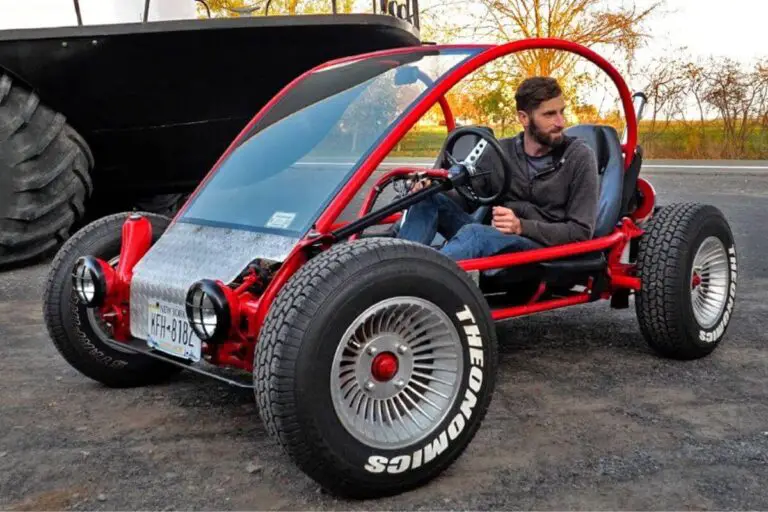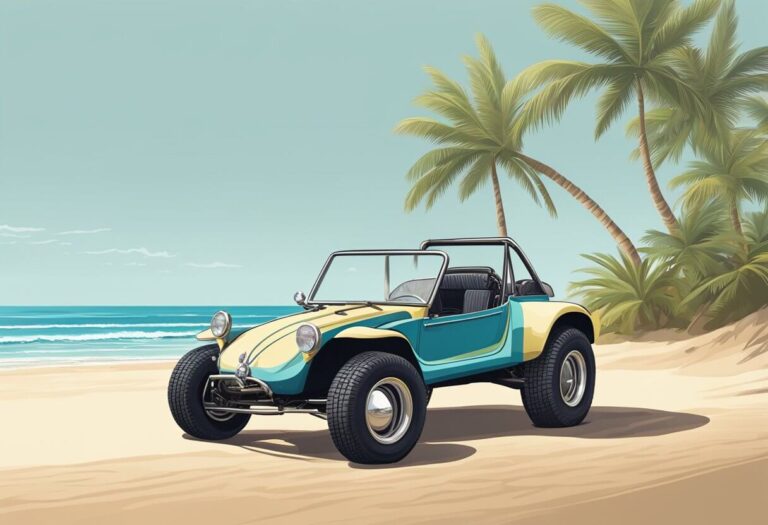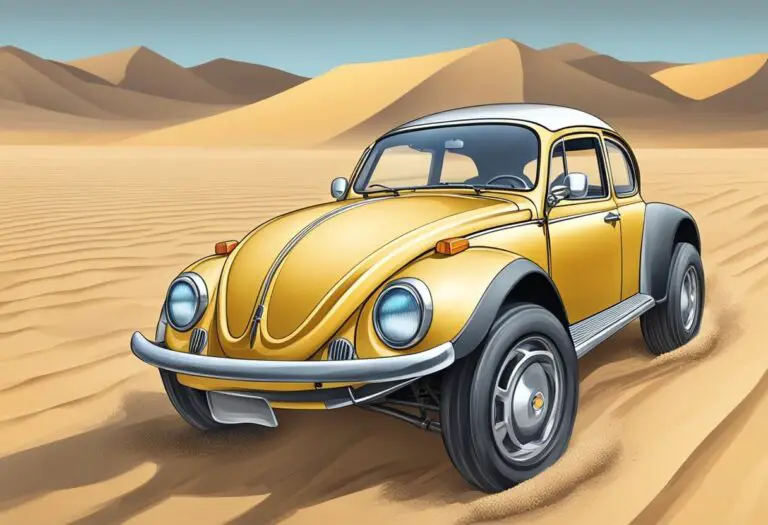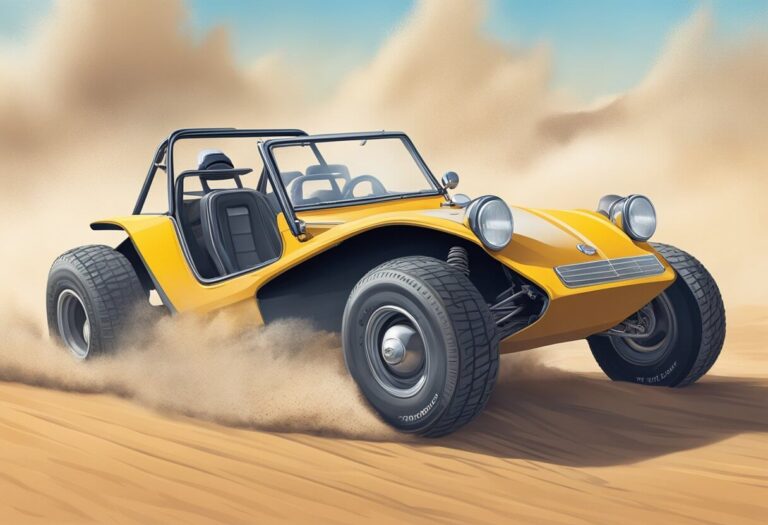Volkswagen Dune Buggy: A Classic Off-Road Vehicle
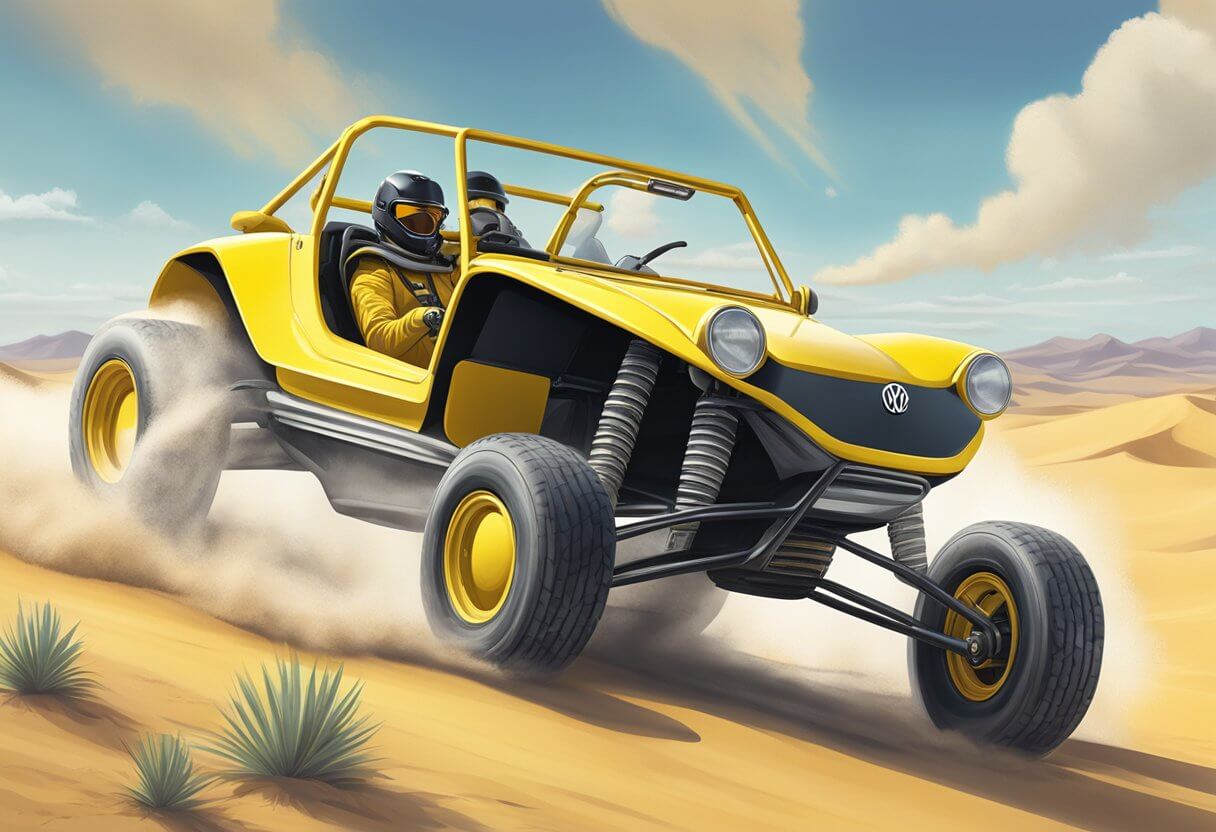
The Volkswagen Dune Buggy is a classic automobile that has been popular for several decades. It is a lightweight, open-air vehicle that was designed for off-road use. The Dune Buggy has a unique look that is instantly recognizable, with its wide tires, open body, and exposed engine.
The Dune Buggy was originally designed as a kit car that could be assembled by enthusiasts. It was first introduced in the 1960s and quickly became popular due to its low cost and easy assembly. The Dune Buggy is based on the Volkswagen Beetle chassis and uses the same air-cooled engine. It was designed to be a fun, affordable, and practical vehicle for off-road use.
Today, the Dune Buggy remains a popular vehicle for off-road enthusiasts and collectors alike. It has a loyal following and is considered a classic car. There are many different models and variations of the Dune Buggy, each with its own unique features and design. Whether you are looking for a vintage model or a modern electric version, the Volkswagen Dune Buggy is a fun and unique vehicle that is sure to turn heads.
History of the Volkswagen Dune Buggy
Origins
The Volkswagen Dune Buggy has a rich history dating back to the 1960s. The first dune buggy was created by Bruce Meyers in 1964. He designed the Meyers Manx, which was based on the chassis of a Volkswagen Beetle. The design featured a fiberglass body and was lightweight, making it perfect for driving on sand dunes. The popularity of the Meyers Manx grew quickly, and soon other companies began producing their own versions of the dune buggy.
Popularity in the 1960s
During the 1960s, the Volkswagen Dune Buggy became a symbol of the counterculture movement. The dune buggy was seen as a way to escape the constraints of society and explore the great outdoors. The popularity of the dune buggy was also fueled by movies such as “The Endless Summer” and “The Thomas Crown Affair,” which featured dune buggies in their plots.
Modern Revival
In recent years, the Volkswagen Dune Buggy has experienced a resurgence in popularity. Many enthusiasts are restoring and customizing vintage dune buggies, while others are building their own from scratch. The popularity of the dune buggy can be attributed to its unique design and the sense of freedom it provides. The dune buggy is also a great way to explore the great outdoors and experience the thrill of off-road driving.
Overall, the Volkswagen Dune Buggy has a rich history and continues to be a popular vehicle among enthusiasts. Its unique design and sense of freedom make it a timeless classic.
Design and Features
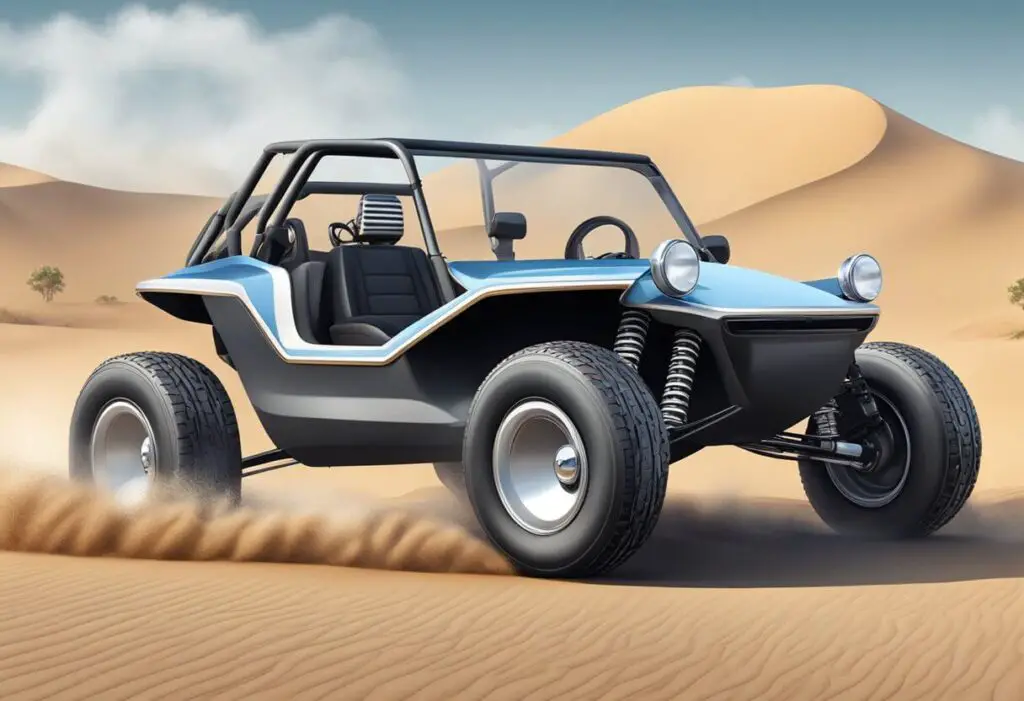
Chassis and Body
The Volkswagen dune buggy features a lightweight, tubular steel chassis that is designed to withstand the rigors of off-road driving. The body of the dune buggy is made of fiberglass, which is both lightweight and durable. The fiberglass body is also resistant to rust and corrosion, making it ideal for use in harsh environments.
Engine Specifications
Volkswagen dune buggies are typically powered by air-cooled, four-cylinder engines. These engines are known for their reliability and durability, and they are capable of producing a respectable amount of power. The most common engine used in dune buggies is the Volkswagen Type 1 engine, which has a displacement of 1.6 liters and produces around 60 horsepower.
Safety Features
Although dune buggies are primarily designed for off-road use, safety is still a top priority. Volkswagen dune buggies are equipped with a variety of safety features, including roll cages, seat belts, and reinforced frames. These features help to protect the driver and passengers in the event of an accident or rollover.
Although dune buggies are an exciting and fun way to explore the off-road terrain they can also be dangerous if not driven carefully and responsibly. Drivers must always wear the right safety gear and obey all local laws.
Models of Volkswagen Dune Buggy

Meyers Manx
The Meyers Manx is the original and most iconic model of Volkswagen dune buggy. It was designed by Bruce Meyers in the 1963s and became an instant hit due to its unique design and off-road capabilities. The Manx was built on a shortened Volkswagen Beetle chassis and featured a fiberglass body with a distinct shape that included a rounded front end, a short hood, and a wide rear section.
The Meyers Manx was available in different versions, including the classic two-seater, the four-seater, and the tow’d, which was a small trailer that could be attached to the back of the buggy. The Manx was also offered with different options, such as a hardtop, a soft top, and different wheel and tire combinations.
Volkswagen ID. BUGGY Concept
The Volkswagen ID. BUGGY Concept is a modern interpretation of the classic dune buggy. It was introduced at the 2019 Geneva Motor Show and is based on Volkswagen’s modular electric drive matrix (MEB) platform. The ID. BUGGY Concept features a minimalist design with a waterproof interior and a removable soft top.
The ID. BUGGY Concept is powered by a 62-kWh battery pack and an electric motor that produces 201 horsepower and 228 lb-ft of torque. It has a range of 155 miles on a single charge and can accelerate from 0 to 60 mph in just 7.2 seconds. The ID. BUGGY Concept also features a four-wheel-drive system and a suspension setup that allows it to tackle rough terrain with ease.
Overall, the Meyers Manx and the Volkswagen ID. BUGGY Concept are two of the most notable models of Volkswagen dune buggy. While the Manx is a classic that has been around for decades, the ID. BUGGY Concept represents the future of off-road vehicles with its electric powertrain and modern design.
Customization and Aftermarket
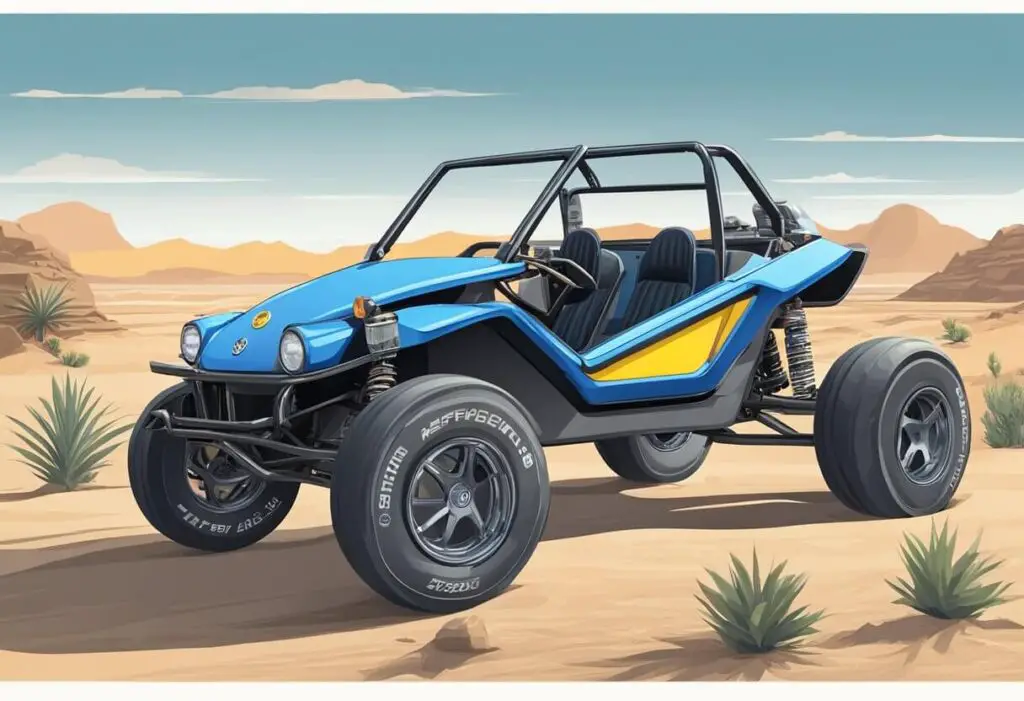
DIY Kits
One of the most exciting aspects of owning a Volkswagen Dune Buggy is the ability to customize it to your liking. There are plenty of DIY kits available that allow you to modify your buggy’s appearance and performance. For example, you can purchase a kit to add a roll cage or a kit to convert your buggy to a two-seater.
DIY kits are a great way to save money and add a personal touch to your Dune Buggy. However, it’s important to keep in mind that some kits may require advanced mechanical knowledge and tools. Always read the instructions carefully and consult with a professional if you’re unsure about any steps.
Performance Upgrades
If you’re looking to improve your Dune Buggy’s performance, there are plenty of aftermarket parts available. Upgrades to the engine, suspension, and brakes can all have a significant impact on your buggy’s speed and handling.
One popular upgrade is to install a high-performance exhaust system. This can increase horsepower and improve the sound of your engine. Another option is to upgrade your suspension with new shocks and springs. This can improve your buggy’s handling and make it more comfortable to drive on rough terrain.
When purchasing aftermarket parts, it’s important to do your research and choose reputable brands. Poor-quality parts can be dangerous and may not provide the desired performance improvements. Always follow the manufacturer’s instructions when installing new parts and consider consulting with a professional if you’re unsure about any steps.
In conclusion, customizing and upgrading your Volkswagen Dune Buggy can be a fun and rewarding experience. DIY kits and aftermarket parts can help you achieve the look and performance you desire, but it’s important to approach these modifications with caution and follow all instructions carefully.
Volkswagen Dune Buggy in Popular Culture
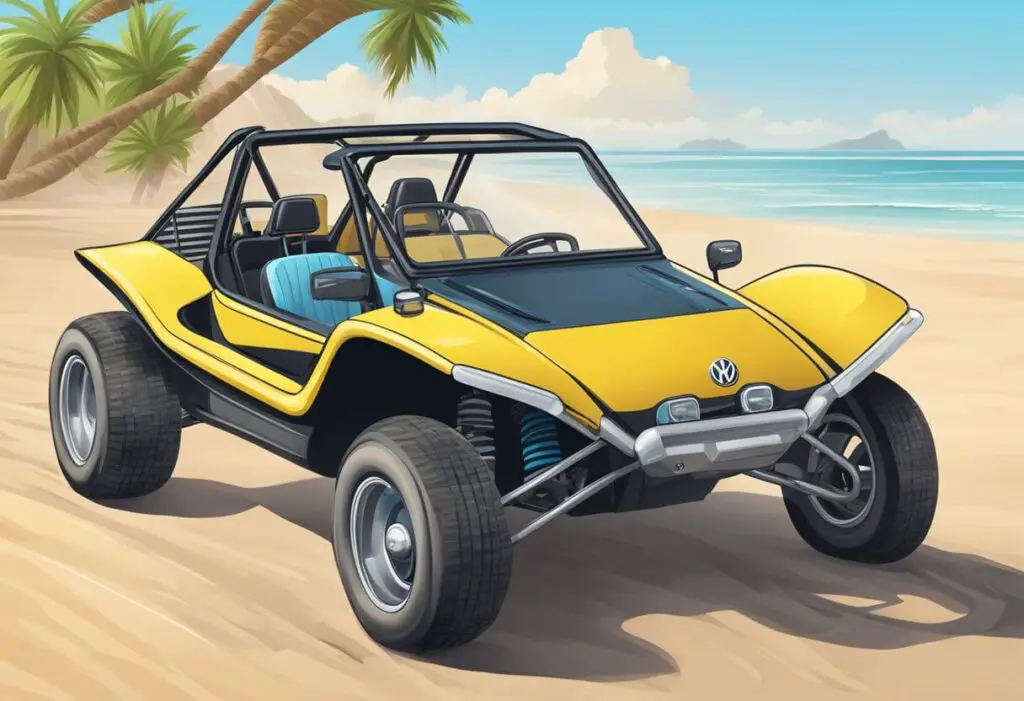
Movies and Television
The Volkswagen Dune Buggy has made several appearances in popular culture, including movies and television shows. One of the most famous examples is the 1960s TV show “The Beach Boys,” which featured a bright orange dune buggy with a Volkswagen engine. The dune buggy was driven by the character “Schlepcar,” who was played by actor Robert Pine.
Another notable appearance of the Volkswagen Dune Buggy in popular culture is the movie “The Thomas Crown Affair” (1999). The character played by Pierce Brosnan drives a custom-built dune buggy in a chase scene through the streets of New York City.
Video Games
The Volkswagen Dune Buggy has also made appearances in several video games. One of the most notable is the “Gran Turismo” series, where players can race a Volkswagen Dune Buggy in various off-road events. The dune buggy is known for its excellent handling and speed, making it a popular choice for players looking for an off-road challenge.
Another video game that features the Volkswagen Dune Buggy is “Forza Horizon 4.” In the game, players can customize the dune buggy to their liking and race it on various tracks and off-road courses.
Overall, the Volkswagen Dune Buggy has become an iconic vehicle in popular culture, appearing in movies, television shows, and video games. Its unique design and off-road capabilities have made it a popular choice for those looking for a fun and adventurous ride.
Ownership Experience

Maintenance and Care
Owning a Volkswagen Dune Buggy requires regular maintenance and care to keep it in good condition. The buggy’s chassis and suspension should be inspected for any damage, such as cracks, dents, broken bolts, or a warped frame. Regular cleaning of the buggy’s exterior and interior is also important to maintain its appearance and prevent any damage from dirt or debris.
The battery of the electric Dune Buggy should be charged regularly to ensure that the buggy is ready to go whenever necessary. It is recommended to charge the battery overnight to ensure that it is fully charged and ready to use.
Regular oil changes and tune-ups are also important to keep the buggy running smoothly. It is recommended to follow the manufacturer’s guidelines for maintenance and care to ensure that the buggy is in good condition.
Community and Events
Owning a Volkswagen Dune Buggy is not just about driving it, but also about being part of a community of enthusiasts. There are many events and gatherings where Dune Buggy owners can meet and share their experiences.
The Volkswagen Dune Buggy community is a welcoming and friendly group of enthusiasts who are passionate about their vehicles. Many events are organized throughout the year, such as car shows, cruises, and off-road rallies.
Attending these events is a great way to meet other Dune Buggy owners, share experiences, and learn more about these unique vehicles. The community is also a great resource for information and advice on maintenance and care, as well as modifications and upgrades.
Environmental Impact
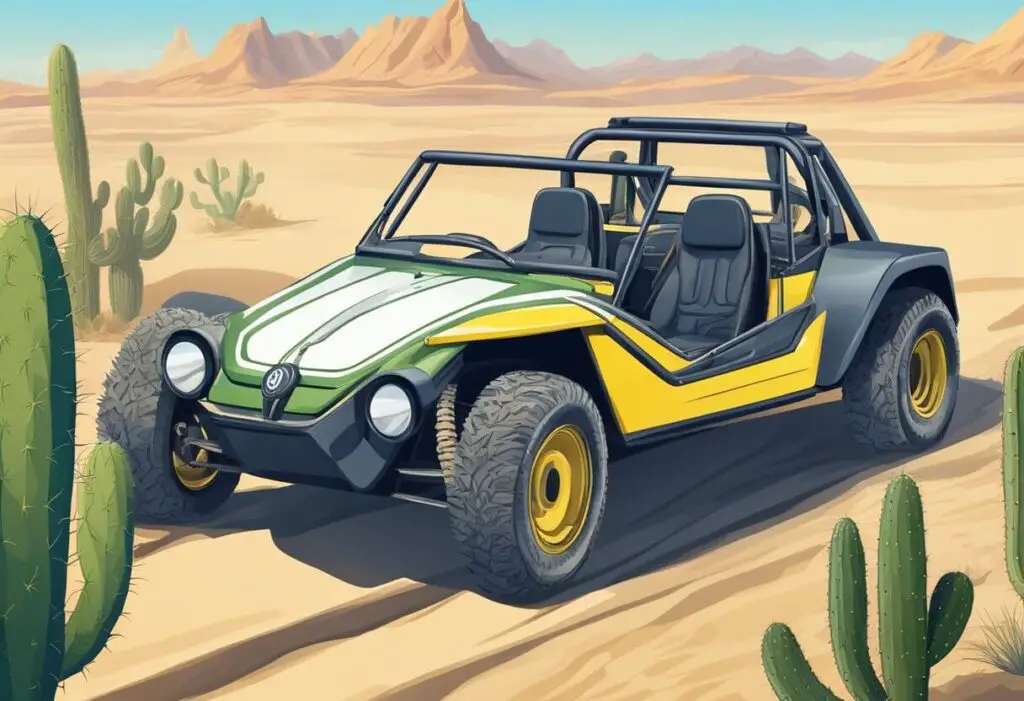
Emissions and Regulations
The Volkswagen Dune Buggy has a long history of being a fun, open-air vehicle that is perfect for cruising on the beach. However, with the increasing concern for the environment, emissions have become a significant issue for the automotive industry. Volkswagen has been working hard to reduce emissions from its vehicles, and the electric Dune Buggy is a great example of this effort.
The electric Dune Buggy is emissions-free, which means it produces zero pollution while driving. This is a significant improvement over traditional gasoline-powered vehicles, which emit harmful pollutants into the air. The electric Dune Buggy is also designed to comply with all relevant regulations, making it a safe and environmentally friendly vehicle.
Electric Dune Buggy Innovations
The electric Dune Buggy is a new and innovative vehicle that is designed to be both fun and environmentally friendly. It is built on Volkswagen’s MEB platform, which is specifically designed for electric vehicles. This platform allows for a more efficient use of energy, which means the electric Dune Buggy has a longer range than traditional electric vehicles.
The electric Dune Buggy also features a modular battery system, which allows for easy replacement and upgrading of the battery. This means that as battery technology improves, the electric Dune Buggy can be easily upgraded to take advantage of these improvements.
In addition, the electric Dune Buggy features a regenerative braking system, which captures energy that would otherwise be lost during braking and uses it to recharge the battery. This system helps to extend the range of the vehicle and reduce energy consumption.
Overall, the electric Dune Buggy is a great example of Volkswagen’s commitment to reducing emissions and creating innovative, environmentally friendly vehicles.
Buying Guide
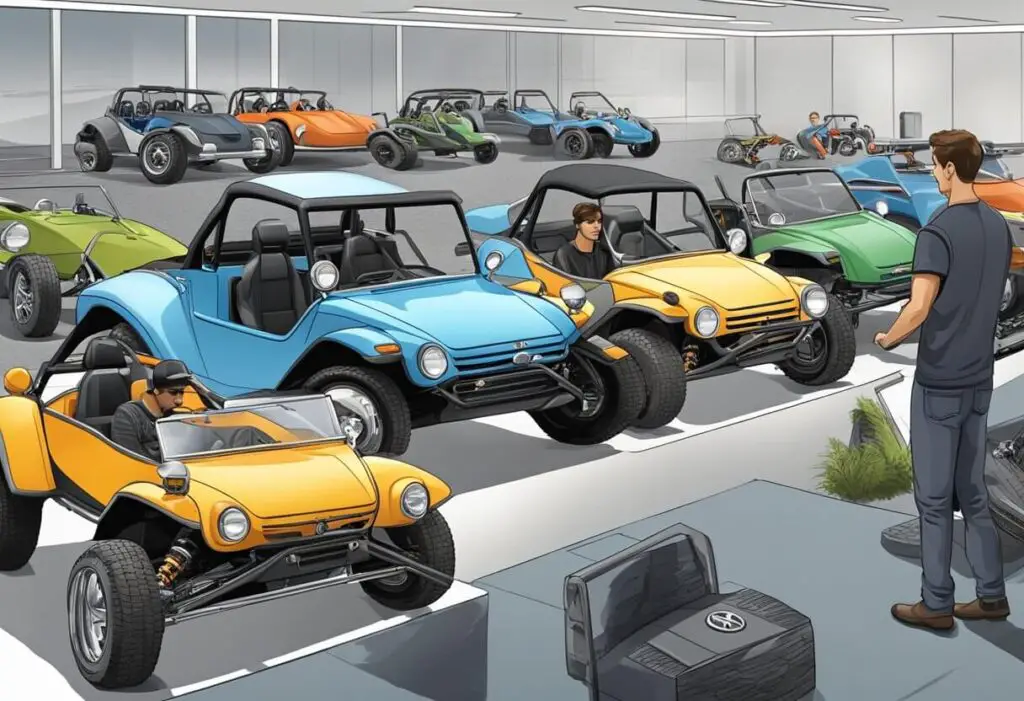
New vs Used
When considering purchasing a Volkswagen dune buggy, one of the first decisions to make is whether to buy new or used. New dune buggies offer the latest technology and features, but they may come with a higher price tag. Used dune buggies may have some wear and tear, but they can be more affordable. It’s important to weigh the pros and cons of each option and consider factors such as budget, intended use, and personal preferences.
Inspection Tips
Whether buying a new or used dune buggy, it’s important to inspect the vehicle thoroughly before making a purchase. Look for signs of wear and tear, such as rust, dents, or scratches. Check the engine, brakes, and suspension for any issues or potential problems. Take the dune buggy for a test drive to get a feel for how it handles and performs. It’s also a good idea to have a professional mechanic inspect the vehicle before finalizing the purchase.
Cost Considerations
The cost of a Volkswagen dune buggy can vary widely depending on factors such as the model, year, and condition of the vehicle. New dune buggies can range from several thousand to tens of thousands of dollars, while used dune buggies can be found for much less. It’s important to set a budget and stick to it when shopping for a dune buggy. Keep in mind that there may be additional costs associated with owning a dune buggy, such as maintenance, repairs, and insurance.
Legal Considerations

Street Legality
When it comes to street legality, the Volkswagen Dune Buggy must meet certain requirements to be considered street legal. In California, for instance, the dune buggy must pass a Bureau of Automotive Repair (BAR) inspection to ensure that it meets all safety standards and emissions requirements. Upon passing the inspection, the BAR will issue a “Certificate of Compliance” that is required to register the vehicle with the Department of Motor Vehicles (DMV).
Aside from the BAR inspection, street-legal dune buggies must also comply with other regulations, such as those related to lighting, mirrors, and seat belts. For example, the dune buggy must have functioning headlights, taillights, and turn signals. It must also have at least one rearview mirror and a seat belt for each occupant.
Off-Road Regulations
While dune buggies are primarily designed for off-road use, they are still subject to certain regulations when driven off-road. In California, for example, off-road vehicles must have a green or red sticker to operate legally in designated areas. Green stickers are issued to vehicles that comply with California Air Resources Board (CARB) emissions standards, while red stickers are issued to vehicles that do not comply with these standards.
In addition to the sticker requirement, off-road dune buggies must also comply with other regulations related to noise levels, spark arrestors, and speed limits. For example, the vehicle must have a properly functioning spark arrestor to prevent wildfires, and it must not exceed the posted speed limit in off-road areas.
Overall, it is important for dune buggy owners to understand the legal considerations related to both street and off-road use. By complying with these regulations, owners can ensure that their vehicle is safe and legal to operate, whether on the street or in the sand dunes.
Conclusion
Overall, the Volkswagen Dune Buggy is a unique and exciting vehicle that has captured the hearts of many enthusiasts and casual drivers alike. Its history is rich and its design is iconic, making it a true classic in the automotive world.
With the recent release of the electric version of the Dune Buggy, Volkswagen has shown that they are committed to innovation and sustainability. The use of the MEB small-car electric-vehicle platform has allowed for a modern twist on a classic design, while also reducing the environmental impact of the vehicle.
The enduring popularity of the Dune Buggy can be attributed to its DIY spirit and customizability. Enthusiasts have been able to create their own unique versions of the vehicle, adding their own personal touches and modifications. This has allowed for a sense of community and creativity to flourish around the Dune Buggy.
Overall, the Volkswagen Dune Buggy is a vehicle that has stood the test of time and continues to capture the imagination of drivers around the world. Its unique design, rich history, and commitment to innovation make it a true icon in the automotive world.


